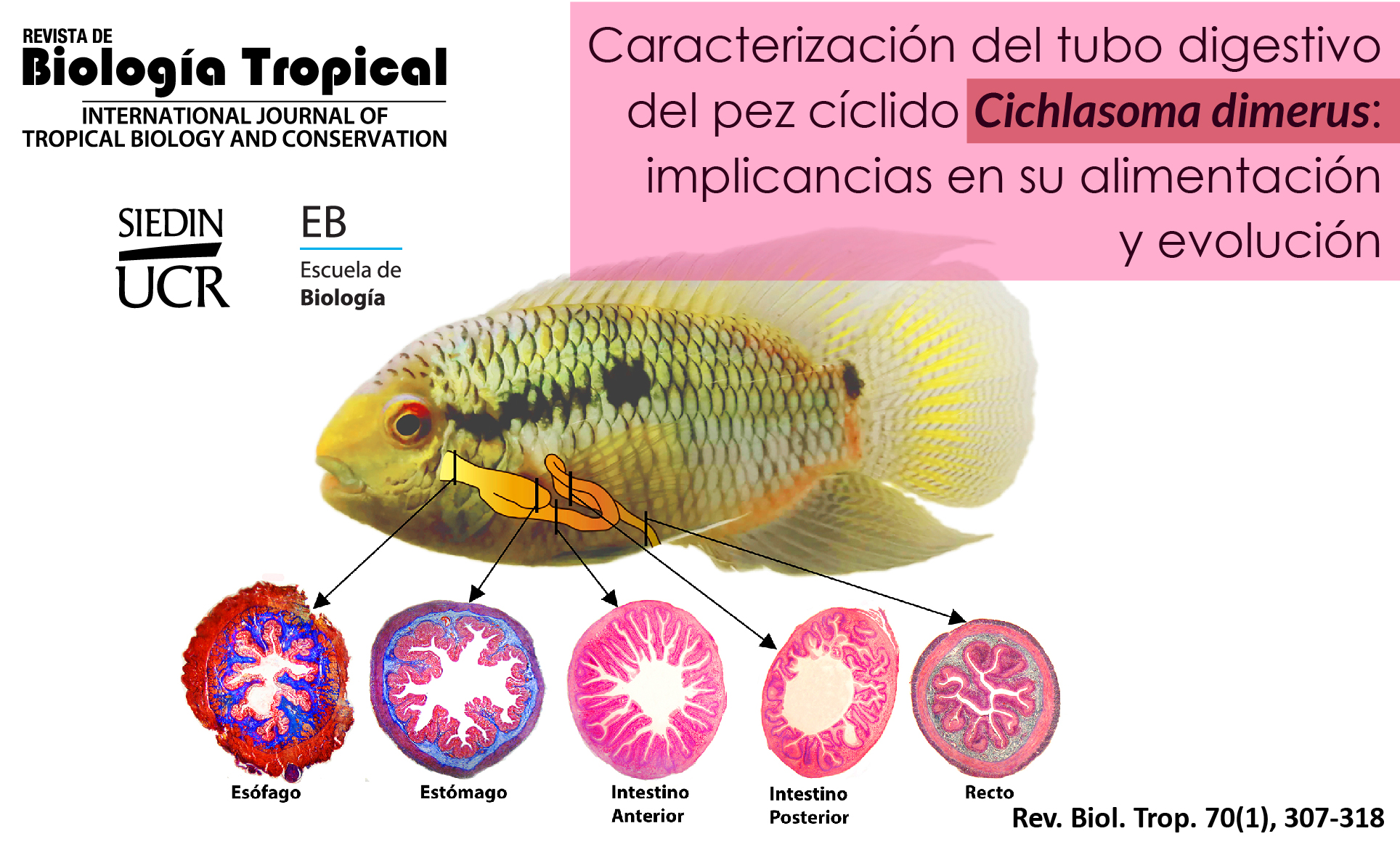Abstract
Introduction: The digestive tract of Neotropical cichlids has not been deeply studied, and it is a fundamental topic for understanding fish physiology, nutrition, trophic associations, and evolution. Objective: To describe anatomically and histologically the digestive tract of the Neotropical cichlid fish Cichlasoma dimerus and to immunolocalize the orexigenic peptide (Npy) along the intestine. Methods: We euthanized 14 adult individuals and fixed the organs in Bouin´s solution; we stained 7 μm thick paraffin sections for general description and with Alcian Blue (pH = 2.5, AB) and Periodic acid-Schiff (PAS) to identify acid or neutral glycoconjugates, respectively. Additionally, 3 adult individuals to immunohistochemistry for Npy, we manually counted PAS- and AB-positive cells, and Npy-immunoreactive cells per fold. Results: There is a short oesophagus, a sac-like stomach, and a tubular intestine with two loops. The oesophagus has a stratified epithelium with a high density of PAS- and AB-positive goblet cells and striated muscle fibes in the tunica muscularis. The stomach mucosa is formed by simple columnar epithelium. The intestine has a simple columnar epithelium, with brush border and interspersed PAS- and AB-positive goblet cells, and Npy-immunoreactive cells. There is an ileorectal valve in the transition between the posterior intestine and the rectum. This last gut portion has goblet cells and a thicker tunica muscularis. Conclusions: C. dimerus shares features with other Neotropical cichlids, but the goblet cells and gastric glands distribution seems to be unique for the species. To our understanding, this is the first work to describe Npy-immunoreactive cells distribution in the intestine of a Neotropical cichlid fish.
##plugins.facebook.comentarios##

This work is licensed under a Creative Commons Attribution 4.0 International License.
Copyright (c) 2022 Revista de Biología Tropical







